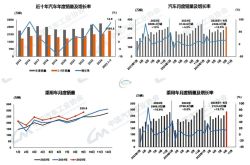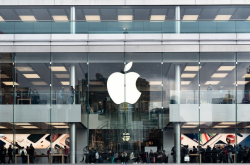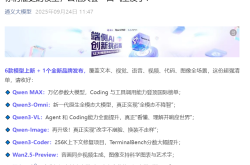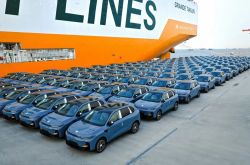9 Million iPhones Bound for the U.S. Still 'Made in China': Apple's 'De-Chinafication' Effort Stumbles Again
![]() 10/14 2025
10/14 2025
![]() 544
544
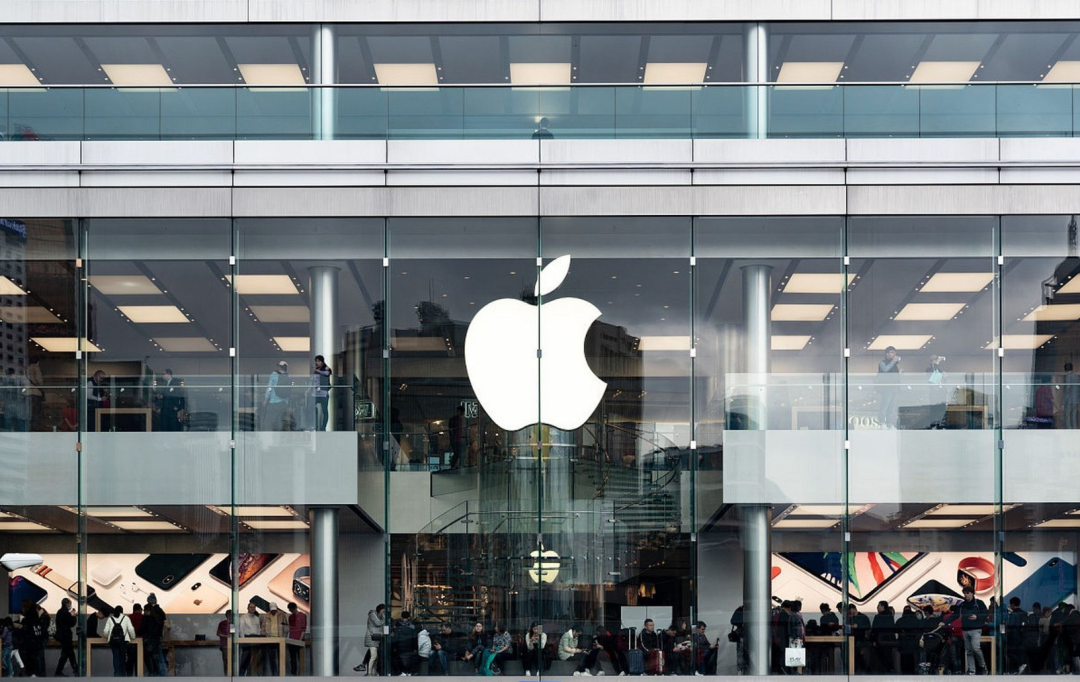
Text by Wang Miao, Art by Gu Qingqing, Produced by Networld
It has been eight years since Apple first advocated for "supply chain diversification," with India emerging as a pivotal destination for its production capacity relocation. However, recent developments suggest that completely decoupling from Chinese production remains an unattainable goal for Apple.
According to a report by Jefferies analysts, Apple is projected to directly export approximately 9 million iPhones from China to the U.S. market in the 2026 fiscal year (starting in October 2025).
Apple has made substantial efforts to shift its production. On one hand, it has relocated a significant portion of iPhone manufacturing to India. On the other hand, it has committed to investing $600 billion in the U.S. over the next few years to establish a domestic silicon supply chain, aiming to secure tariff exemptions.
Despite these endeavors, India's production capacity still falls short of meeting the robust demand in the U.S. market. American consumers' appetite for iPhones remains strong, and Indian factories are unable to fully satisfy this demand in the short term, necessitating continued reliance on Chinese production to bridge the gap.
This situation underscores that Apple still has a long journey ahead in fully transferring its production capacity from China to India.
01 India's Supply Chain 'Lacks Chips and Components': Core Parts Still Depend on China
While India aspires to become Apple's production hub, numerous challenges persist in practice.
Firstly, at the production end, India's factory yield rates remain a significant hurdle. Zhengzhou Foxconn achieves a stable iPhone yield rate exceeding 97%, whereas Indian factories peak at 93%—a 4-percentage-point gap. Although seemingly small, this difference leads to higher defect rates and costs in mass production.
Production efficiency also lags behind. Apple's contract manufacturers in India—primarily Foxconn and Tata Electronics—account for two-thirds and one-third of India's iPhone shipments, respectively.

Tata Electronics expanded its capacity by acquiring Indian operations of Chinese suppliers, such as purchasing the Indian unit of Jiangsu Just Precision Industry for nearly $100 million and acquiring a 60% stake in Pegatron's Indian subsidiary. Despite these moves, capacity growth remains sluggish.
The supply chain poses even greater constraints. Of the 2,700 components in an iPhone, fewer than half can be sourced domestically in India, with 60% of core parts—such as chips, OLED screens, and camera modules—imported from China. India lacks the capability to manufacture these critical components.
Last year, during the assembly of the iPhone 15 in India, component shortages led to returns and forced significant price reductions.
Logistics and infrastructure also lag. India's roads and ports are inferior to those in China, resulting in lower transportation efficiency. A Foxconn executive noted that India's infrastructure lags far behind China's, even lacking the conditions to produce high-end OLED models.

Shipping core components from China to India increases both time and costs, adding roughly $12 per unit. Consequently, Indian-made iPhones cost 5–10% more than their Chinese counterparts, with some models reaching a 20% premium.
Apple initially aimed for India to handle all U.S.-bound iPhone production by the end of 2026. However, the need to import 9 million units from China in the 2026 fiscal year highlights India's inability to meet U.S. demand.
02 China's Supply Chain Advantages Remain Unmatched: Apple's 'De-Chinafication' Unrealistic
Apple's continued reliance on Chinese iPhone production for the U.S. market stems from China's overwhelming supply chain advantages, which remain unmatched in the short term.
Firstly, consider supply chain completeness. China accounts for over 50% of Apple's 187 core suppliers listed in 2024, with 87% of Chinese suppliers operating factories in China. From camera modules to chips, batteries to screens, Apple procures 99% of its components domestically in China.
Take BOE, for example: its top-tier OLED screen yield rate reaches 85%, outperforming Samsung by 5 percentage points. BYD's graphene heat dissipation technology extends iPhone battery life by 23%, while Luxshare Precision's self-developed MES system forms the backbone of Apple's automated production.

Indian factories rely heavily on these core components from China, even for locally assembled iPhones.
Next, consider production efficiency. Chinese factories outperform India's by a wide margin. Chinese workers are three times as productive as their Indian counterparts, and China's industrial robot density is 12 times higher than India's.
Chinese factories can reconfigure production lines in 72 hours, compared to two weeks in India. During iPhone 16 Pro launches, Chinese factories produced 1 million units daily, while India maxed out at 300,000.
Last year, Indian production shortages caused a two-week stockout of the iPhone 16 Pro in the U.S. market, necessitating emergency orders from Chinese factories to fill the gap.

Talent reserves also favor China. China produces millions of engineering graduates annually, with over 100,000 professional engineers employed by Apple's core suppliers.
India struggles to find skilled equipment debugging engineers. Apple's advanced manufacturing initiatives in India required deploying hundreds of Chinese engineers for hands-on training, even assisting with factory utilities planning. India would need at least 15 years of educational development to match China's engineer pool.
Policy and business environment advantages further tilt in China's favor. During the pandemic, Henan Province organized point-to-point employee transportation to resume Foxconn's operations, safeguarding production. In 2025, amid a global chip shortage, China prioritized Apple's core component supply through industrial coordination—support India currently cannot replicate.
03 Apple Seeks Risk Mitigation Through Capacity Shifts but Remains Tethered to China's Supply Chain
Apple's persistence in shifting production to India primarily aims to mitigate risks.
On one hand, U.S.-China trade frictions have imposed tariff pressures. Although Apple secured exemptions, future policy uncertainties loom. On the other hand, U.S. government pressure to reduce reliance on Chinese supply chains has pushed Apple to diversify production.
To facilitate this shift, Apple has invested in Indian factories and pledged $600 billion in U.S. supply chain development to curry favor with Washington and secure tariff concessions.
However, reality reveals high U.S. production costs and limited capacity, while India's lower costs are offset by productivity and capacity constraints, necessitating continued reliance on Chinese production.
Complicating matters, India is not a "safe haven." In April 2025, Trump announced plans to impose a 25% tariff on Indian-made iPhones, arguing for U.S.-based production.

This underscored Apple's realization that no production relocation can fully escape geopolitical risks, making China's supply chain stability its most precious asset.
Cost considerations further complicate the picture. Apple anticipated cost reductions through Indian manufacturing, but India's 15% higher construction costs, double the logistics expenses, and rework costs from low yield rates have increased iPhone production costs. Tax incentives and logistics optimizations have offered limited relief.
Apple now faces a dilemma: retaining Chinese production risks tariffs and geopolitical exposure, while shifting production leads to higher costs, lower efficiency, and capacity shortfalls. The need to import 9 million iPhones from China to the U.S. in the 2026 fiscal year epitomizes this predicament.
Conclusion: Apple's Indian Capacity Shift Incomplete, China Remains Core Partner
Apple's plan to transfer iPhone production from China to India remains far from complete. The need to ship 9 million iPhones from China to the U.S. in the 2026 fiscal year highlights India's capacity shortcomings and China's unmatched manufacturing strengths.
While India has gradually taken on some iPhone production—even supplying the U.S. market—issues like low yield rates, inadequate supply chain localization, backward infrastructure, and talent shortages prevent it from meeting robust U.S. demand in the near term.
China's complete industrial chain, efficient production, abundant talent, and stable policy environment form an unbreakable core for Apple's supply chain.
For Apple, "supply chain diversification" currently means retaining core production in China while supplementing with overseas capacity.
China will continue producing high-end iPhones for major markets like China, Europe, Japan, and South Korea, supplying core components to Indian assembly plants, and even filling U.S. market gaps when Indian capacity falls short.
In the coming years, Apple's complete decoupling from Chinese production capacity remains highly unlikely. China's central role in the global consumer electronics supply chain has not diminished but strengthened through technological upgrades and efficiency improvements.

